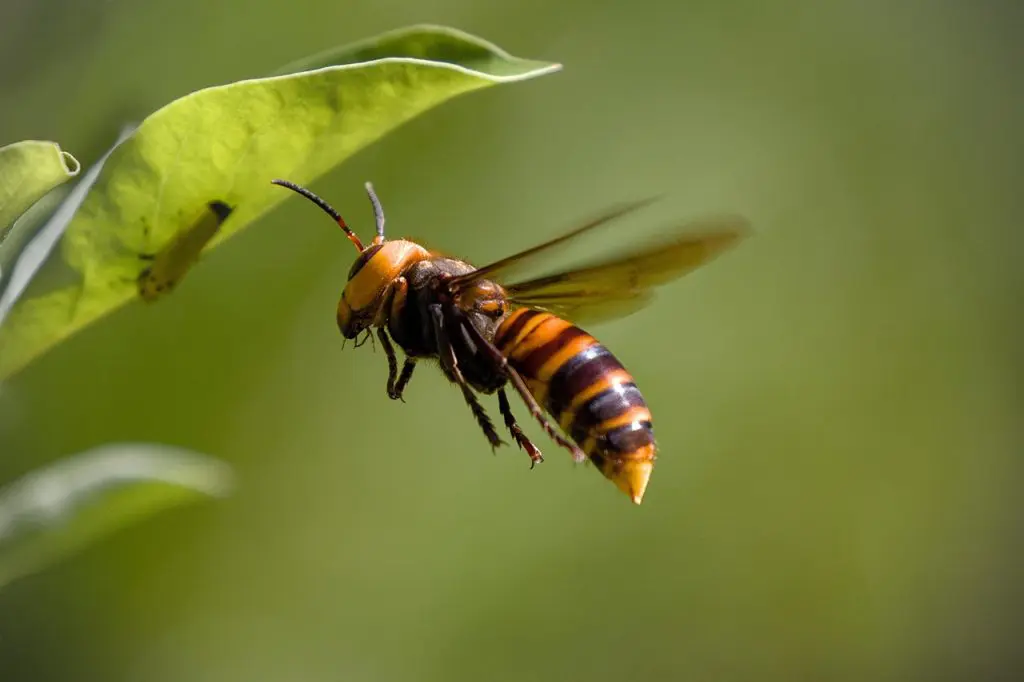
A solitary Asian hornet has been confirmed in Northern Ireland for the first time, prompting a rapid response from environmental authorities. The insect was captured in Dundonald on 10 October by a vigilant member of the public and later verified by the Northern Ireland Environment Agency (NIEA). What Is the Asian Hornet? Also known as […]
A solitary Asian hornet has been confirmed in Northern Ireland for the first time, prompting a rapid response from environmental authorities. The insect was captured in Dundonald on 10 October by a vigilant member of the public and later verified by the Northern Ireland Environment Agency (NIEA).
Also known as the yellow-legged hornet (Vespa velutina), the Asian hornet is an invasive non-native species that first arrived in Europe in 2004. Though not considered more dangerous to humans than native hornets, it is known to be a highly effective predator of insects, especially pollinators like honeybees.
Visually, the Asian hornet is dark brown or black with a distinctive yellow band on the fourth abdominal segment and yellow legs, helping distinguish it from European hornets or wasps.
Environment Minister Andrew Muir stated the species presents “a serious threat to both biosecurity and local ecology, particularly valuable pollinating insects.”
Asian hornets prey on over 1,000 insect species, including:
Honey bees
Bumble bees
Butterflies
Beetles
Their feeding habits can lead to declines in pollinator populations, undermining both biodiversity and agricultural pollination.
This is the first confirmed record of an Asian hornet in Northern Ireland. While two nests were found and destroyed in County Cork earlier this year, this Dundonald sighting involved a single insect.
Minister Muir clarified:
“This is a solitary Asian hornet, but a departmental response is underway to ensure that no other Asian hornets are present.”
The NIEA, part of the Department for Agriculture, Environment and Rural Affairs (DAERA), has launched a monitoring programme using:
Live traps
Visual surveys
This is to determine whether the hornet was an isolated individual or part of a nest nearby.
If additional sightings are confirmed, intensive monitoring will take place to trace and remove any nests, with follow-up surveys to ensure the species does not become established.
Officials are also working with the National Biodiversity Data Centre as part of the Shared Island Biosecurity and Invasive Species Initiative, benefiting from experiences in responding to earlier incursions in Cork and Cobh.
The NIEA and DAERA are urging the public to remain vigilant and report any suspected sightings.
If you believe you have spotted an Asian hornet:
Do not approach or disturb it or any nest.
Take a clear photograph if possible.
Report it via DAERA’s online system or the National Biodiversity Data Centre.
“I am grateful to the Dundonald householder who captured and reported the Asian hornet,” said Minister Muir. “I would urge the public to remain alert to the potential presence of this insect.”
The successful capture of the Asian hornet in Dundonald underscores the power of citizen science in conservation. A member of the public spotted, captured, and reported the insect, a critical step in preventing its establishment.
Northern Ireland can build on this by:
Expanding public education on invasive species identification
Supporting mobile reporting tools (e.g. apps, WhatsApp hotlines)
Creating local biodiversity watch groups
With limited resources, community-based monitoring can be a frontline defense in early detection and rapid response, saving significant environmental and financial costs later.
While a single hornet might seem minor, failure to act could result in major long-term costs. In France, where the Asian hornet is now established, beekeeping industries have suffered:
Honey production losses
Bee colony collapse
Increased pest control costs
If Asian hornets establish in Ireland:
Monitoring and eradication costs will rise
Crop yields could be affected by reduced pollination
Wild pollinator populations may decline, threatening broader ecological balance
Investment in prevention and monitoring now is more cost-effective than managing an outbreak later.
Countries like France, Spain, and Italy have been dealing with Asian hornet incursions for over a decade. Their experiences offer key lessons:
Early eradication is most effective, when hornets are few and nests are small
Monitoring tech, like harmonic radar tagging or thermal imaging, can help find hidden nests
Coordinated, cross-border approaches improve detection and response speed
Ireland’s cooperation with the Shared Island Biosecurity Initiative and National Biodiversity Data Centre mirrors this strategy and could position Northern Ireland as a model for early action in invasive species management.
While the confirmation of a single Asian hornet in Dundonald is not a cause for alarm, it is a serious early warning. Environmental authorities are taking decisive steps to monitor and prevent the establishment of this invasive species, which has already affected pollinator populations in parts of England and the Republic of Ireland.
Public cooperation will be key in protecting Northern Ireland’s biodiversity and agricultural resilience.
At All-Ireland Sustainability, we’re committed to building a greener, fairer island, together. Stay informed on the latest environmental initiatives, community action, and policy developments shaping sustainability across Ireland, North and South.
👉 Sign up for our newsletter today and be the first to hear about upcoming events, expert insights, and ways to get involved.
Whether you’re a seasoned advocate or just starting your journey, new members are always welcome.
Subscribe now and be part of the All-Ireland Sustainability Membership.